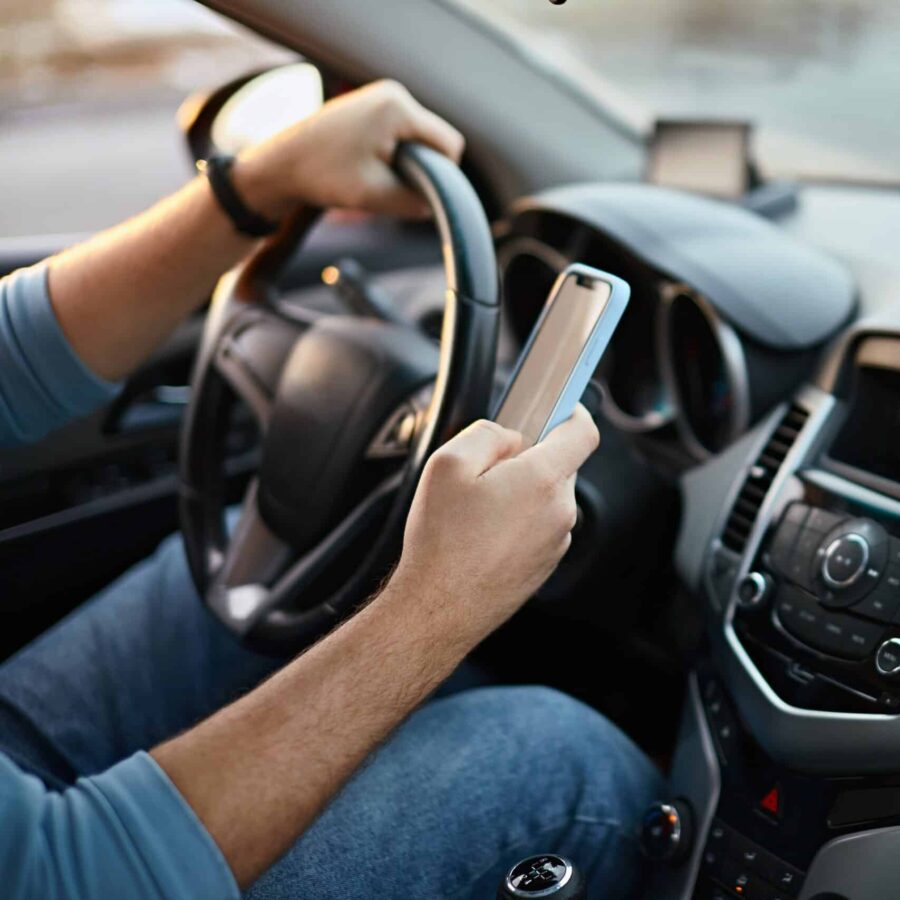Last week the National Highway Traffic safety Administration (NHTSA) announced the release of the first federally-proposed recommendations to limit distracting electronic devices in vehicles. According to the press release, “The proposed voluntary guidelines would apply to communications, entertainment, information gathering and navigation devices or functions that are not required to safely operate the vehicle.”
U.S. Transportation Secretary Ray LaHood calls distracted driving a major threat to the safety of our roadways, which is why he explains he has “made it a priority to encourage people to stay focused behind the wheel.” According to the U.S. government website Distraction.gov, distracted driving killed over 3,000 people in 2010 alone.
Other statistics reported on the driving safety resource explain that using hand-held devices makes drivers “4 times more likely to get into crashes serious enough” to cause injury. Furthermore, the government auto safety website reports that texting “creates a crash risk 23 times worse than driving while not distracted.”
However, the website explains that talking on a hand-held phone, or even a hands-free one, poses great risks as well. According to studies cited by the government agency, cell phone use reduces brain activity associated with driving by 37% and delays a driver’s reactions as much as someone with a blood alcohol concentration of .08 percent, or the legal limit for drunk driving.
The announcement of these proposed distracted driving guidelines comes shortly after President Obama’s fiscal year 2013 budget request, “which includes $330 million over six years for distracted driving programs that increase awareness of the issue and encourage stakeholders to take action.”
The proposed Phase I guidelines rolled out last week, which apply to light vehicles like cars, trucks, and SUVs, offer criteria manufacturers can use to make sure vehicle systems and devices do not pull drivers’ attention from the road for more than a “very limited duration” or distract them with tasks that do not relate to safe driving. NHTSA explains these guidelines include recommendations which do the following:
- Reduce complexity and task length required by the device
- Limit device operation to one hand only (leaving the other hand to remain on the steering wheel to control the vehicle)
- Limit individual off-road glances required for device operation to no more than two seconds in duration
- Limit unnecessary visual information in the driver’s field of view
- Limit the amount of manual inputs required for device operation
Furthermore, the guidelines also include actions drivers are encouraged to stop taking with electronic devices. These include text messaging, internet browsing, social media browsing, entering addresses into navigation systems, dialing phone numbers, and reading texts of more than 30 characters that are unrelated to the trip at hand.
According to the press release, future Phase II guideline proposals may apply to devices that are frequently brought into vehicles and used but not built in. These include smart phones, tablets, and navigation devices. Phase III guidelines may “address voice-activated controls to further minimize distraction in factory-installed, aftermarket, and portable devices,” the press release explains.
NHTSA said that public hearings to gather comment on the proposed guidelines will be held this March in Chicago, Los Angeles, and Washington D.C. The vehicle and roadway safety agency also explains that “Final guidelines will be issued after the agency reviews and analyzes and responds to public input.”
An unofficial version of the guidelines signed by NHTSA Administrator David Strickland can be found here.


